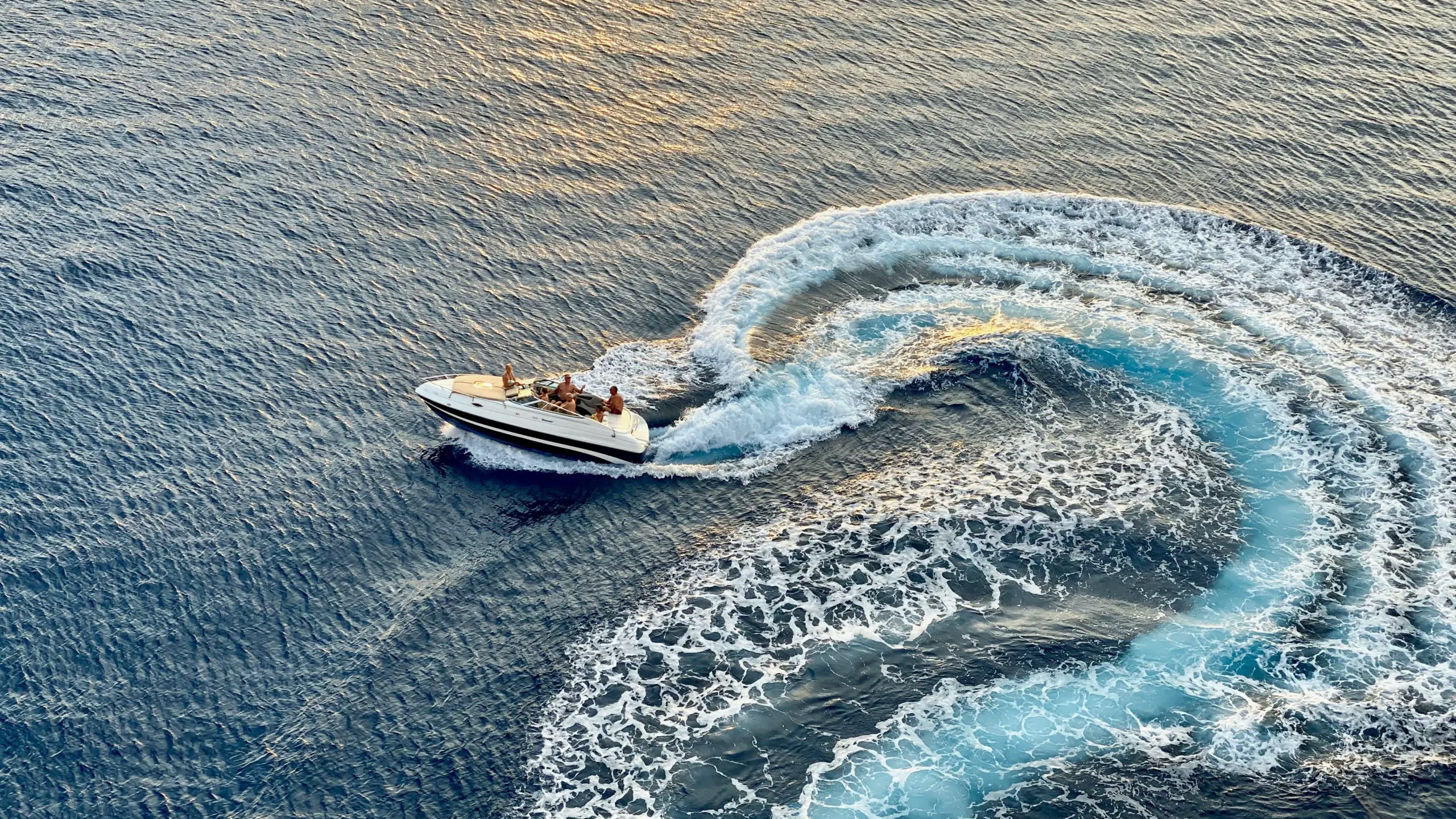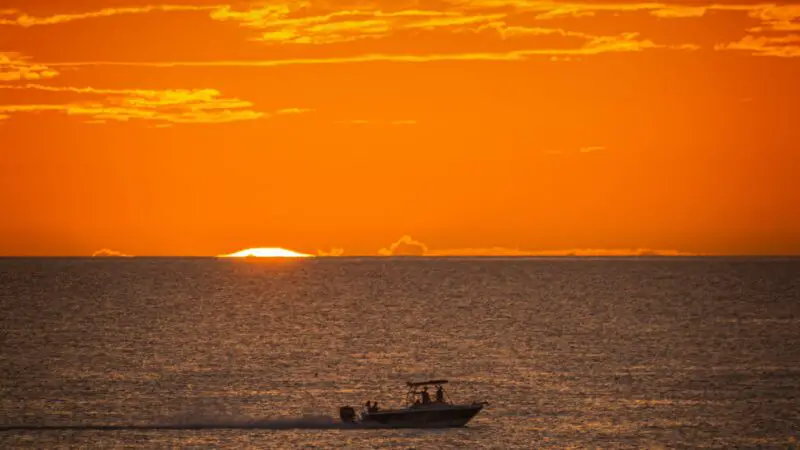Which boat engine consumes the least?

Fuel prices continue to rise and everyone wants to save money at the gas station. It is therefore wise to change your old outboard motor which consumes a lot of gasoline or diesel. Indeed, today there are technologies that allow boat engines to be much more economical while gaining in efficiency. And in addition, they are more ecological for the planet! So what is the boat engine that consumes the least? To answer this question it is not only necessary to look at the type of engine but also its power in relation to the boat as well as the propeller used. This guide will help you reduce your oil consumption every time you go out to sea. Follow our instructions so you don't have to worry about filling up the tank!
How to adapt the type of engine to your boat to consume less?
For a boat engine consumes less, it must be adapted to your boat.
Le gasoline outboard motor is most common on boats up to 7m. This motor is favored over inboard motors or pod drives which are often reserved for larger boats.
Finally, if your boat is over 7m long, then we recommend installing an inboard diesel engine. As the boat is no longer transportable beyond 7m, the advantages of the outboard motor disappear. So, the diesel inboard engines become the most economical, the safest and above all they have better seakeeping.
Why not just choose an electric boat motor to stop consuming oil?
You can considerbuy an electric motor only if your boat does not exceed 3 or 4 meters in length.
In fact, despite all their advantages (silent, vibration-free, environmentally friendly, light, etc.), electric outboard motors today are still not powerful enough to meet the needs of a boat over 4m.
In addition, electric boat motors are much more expensive and have very limited battery life, which limits boating time.
It should therefore be noted that a electric motor on a boat should not be used if:
- your boat is over 3-4m long
- you are looking for speed,
- you navigate in areas with strong currents,
- you have to travel long distance.
In summary, if your navigation area does not prohibit internal combustion engines (this is the case for certain nature reserves), choose a petrol or diesel outboard engine for your boat instead!
Which outboard motor power to choose to consume less?
A gasoline outboard motor can have a power between 0,5 HP and 450 horsepower! There are 6hp boat motors, 15hp, 25hp, 30hp, 50hp, 60hp, 75hp, 100hp, 150hp, 250hp, etc. Because of this wide choice, many boaters do not choose the power of their outboard motor well. And this has a considerable impact on the fuel consumption of the outboard motor.
In overpower, it's intuitive, your boat's engine will consume more. But it's the same in underpower! Thinking about it, that makes sense! You are asking a small outboard motor to move a heavier than expected boat. Inevitably, it will need more energy and therefore more fuel!
It is therefore necessary to choose a boat engine with a power adapted to its boat. So how to determine the ideal power of an outboard motor to consume less ?
First of all, you should know that the length of the boat is not the only parameter to take into account. You will not choose the same engine power if you are sailing in very strong currents or on a lake. The currents in your sailing area are therefore an essential element. The stronger the current, the more power the outboard motor will need to be.
Finally, you also have to consider the weight! Indeed, a satisfactory boat engine on an empty boat can be underpowered once the guests are on board, the coolers with the refreshments on board and the nautical equipment attached – such as a towable buoy. To determine the power of an outboard motor for your boat, it is therefore necessary to calculate the maximum weight envisaged on the boat. Add the weight of the boat with the maximum number of people on board as well as the fuel and the equipment on board.
In conclusion, the theory would like to take into account the length, the maximum weight of the boat and the currents. But in practice the currents change according to the day and the hour. The weight varies enormously depending on the guests and the activities. So it's impossible to calculate.
The best (and only) rule to consider is to choose a outboard motor power equal to or slightly less than the maximum power prescribed by the manufacturer of your boat. Thus, you will be able to face all situations without ever risking damaging the physical integrity of your boat.
The only exception being if you are always maximum two on board or if you use your boat exclusively on a river or a lake. So instead of equaling the maximum power, you can take a boat engine with the power recommended by the manufacturer (and save money on purchase and at the gas station!).
NB: Be aware that a boat license may be required for outboard motors over 6VC (or 4,5 KW for electric outboard motors).
Which boat engine technologies consume the least?
The technologies of boat engines do not all consume the same quantities gasoline or diesel. If your priority is the budget, we have ranked them from the technology that consumes the most to the one that consumes the least:
- direct injection turbo-diesel,
- turbo diesel,
- diesel,
- classic two-stroke engine (before 2010).
- classic 4-stroke engines (before 2010),
- 4-stroke “lean burn” or lean-burn engines,
- modern direct injection 2-stroke engines (designed from 2010),
Why do direct injection 2-stroke gasoline outboard engines consume the least fuel?
Older two-stroke boat engines didn't consume all of the fuel-air mixture – which affected their performance. This is why most boat builders have turned to the 4-stroke boat engine. But the two major flaws of the 4-stroke outboard engine are its complex mechanics and greater weight. Finally, although 4-stroke engines are much more efficient and reliable, they are also more expensive and less powerful than traditional 2-stroke engines.
Fortunately, today there are modern 2-stroke engines known as direct injection (DFI). This DFI technology allows two-stroke boat engines to no longer waste gasoline that has not exploded. As a result, these 'new' two-stroke engines for boats only have advantages.
They are the simplest, lightest, cheapest, most powerful, least polluting, most fuel efficient and best performing outboard motors on the market today!
Direct injection 2-stroke gasoline outboard engines are therefore the boat engines that consume the least (for a boat up to 7m).
There are other types of injection such as carburetor engines or electronic injection engines (EFI) but today DFI technology coupled with a 2-stroke boat engine is the best for a boat. up to 7m.
Which propeller to choose so that your boat's engine consumes less?
The propeller is chosen according to the speed of your engine and not the length of the boat. When the boat reaches its maximum speed, the engine must be at full speed (between 5000 and 6000 rpm depending on the model). Otherwise, the your boat's engine will consume more oil as needed.
NB: Cupped propellers are not recommended if you do not plan to sail at more than 30 knots.
Choose the diameter and number of blades of a propeller so that your boat's engine consumes less
As a general rule, to have the best performance on your boat engine (and therefore consume less), you need a large diameter propeller and as few blades as possible. But the more powerful your engine, the more propeller area (and therefore blades or diameter) will be needed to avoid cavitation problems. In practice, it is therefore recommended to choose a three-blade propeller for the engine outboard of your boat. It will make your outboard motor consume less.
Choose the best propeller pitch for the outboard motor to consume less
Choosing a propeller with the right pitch is crucial for an outboard motor to consume less. But what is propeller pitch? This is the distance traveled by the propeller on each revolution. Propeller pitch is very often expressed in inches.
If we take the analogy of a car:
- A small step is like first gear. In the car, it is used to climb hills and to accelerate. On a boat, we use a small step when we are very loaded or when we are water skiing.
- A medium pitch is like third gear. It is versatile in town for cars and on the sea it is the propeller pitch that we recommend for pleasure boats.
- A big step is like sixth gear. The boat engine becomes quieter and consumes less. This is ideal when maintaining cruising speed for a long time.
To know the exact pitch you need, you must first know the maximum speed of your boat in relation to the power of the outboard motor you have chosen. Once you know this speed, apply the formula below:
Calculation of the theoretical propeller speed in knots:
Vt = max rpm * 60 / gear ratio * propeller pitch in inches / 72 (inches per nautical mile)
Now you know:
- the maximum speed of your boat
- the theoretical speed of the propeller in knots
(always in relation to the power of the boat engine you have chosen.)
The rule is to choose a propeller pitch that balances the equation:
Theoretical propeller speed = Maximum boat speed – 5 knots
Once the ideal propeller pitch has been found, you can:
- Add an inch if you do a lot of cruising distance. In practice, it will reduce fuel consumption and make the boat's engine quieter. But you will lose speed under load.
- Take an inch off if you prefer to use your boat for water sports such as wakeboarding, waterskiing or tubing. In practice, it will increase the speed under load. But you will lose idle speed while having more noise and consuming more.
- Only opt for a propeller with a cup if you want to go faster than 30 knots.
What is the brand of boat engine that consumes the least?
Is there a outboard motor brand who consumes less than the others?
If the budget is your first criterion, you should know that all brands of nautical engine are equal in terms of fuel consumption (for an identical type of engine).
There is no classification of boat engine brands that consume the least fuel. Quite simply because all the big brands are equal. In addition, they all offer excellent engines and warranties of at least 3 years.
- For two-stroke outboard motors, the brands Evinrude, Mercury, Selva, Tohatsu, Nissan and Yamaha.
- For four-stroke outboards, you can trust Johnson, Honda and Suzuki.
- For inboard engines, you will find the brands Nanni, Volvo and Yanmar.
- For electric boat motors, there is the leader Torqeedo but also Minn Kota and Motorguide.
- For semi-outboard motors, the brands Ilmor, Mercruiser and Volvo Penta are references.
See a selection of outboard motors
Learn more about boat motors:
GUIDE: Which outboard motor to choose for a boat?

